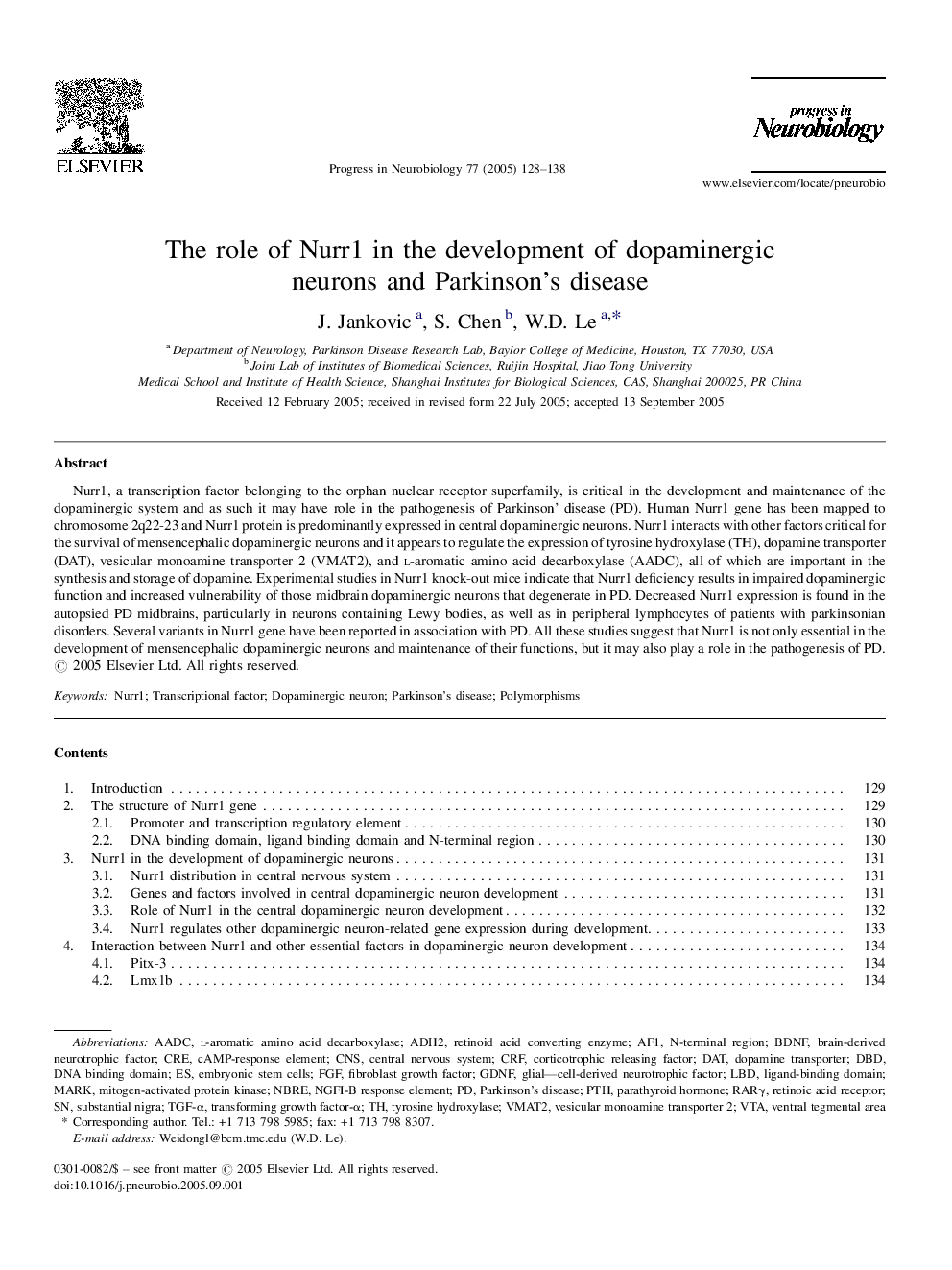| Article ID | Journal | Published Year | Pages | File Type |
|---|---|---|---|---|
| 9435099 | Progress in Neurobiology | 2005 | 11 Pages |
Abstract
Nurr1, a transcription factor belonging to the orphan nuclear receptor superfamily, is critical in the development and maintenance of the dopaminergic system and as such it may have role in the pathogenesis of Parkinson' disease (PD). Human Nurr1 gene has been mapped to chromosome 2q22-23 and Nurr1 protein is predominantly expressed in central dopaminergic neurons. Nurr1 interacts with other factors critical for the survival of mensencephalic dopaminergic neurons and it appears to regulate the expression of tyrosine hydroxylase (TH), dopamine transporter (DAT), vesicular monoamine transporter 2 (VMAT2), and l-aromatic amino acid decarboxylase (AADC), all of which are important in the synthesis and storage of dopamine. Experimental studies in Nurr1 knock-out mice indicate that Nurr1 deficiency results in impaired dopaminergic function and increased vulnerability of those midbrain dopaminergic neurons that degenerate in PD. Decreased Nurr1 expression is found in the autopsied PD midbrains, particularly in neurons containing Lewy bodies, as well as in peripheral lymphocytes of patients with parkinsonian disorders. Several variants in Nurr1 gene have been reported in association with PD. All these studies suggest that Nurr1 is not only essential in the development of mensencephalic dopaminergic neurons and maintenance of their functions, but it may also play a role in the pathogenesis of PD.
Keywords
DBDRARγADH2N-terminal regionsubstantial nigral-aromatic amino acid decarboxylaseAF1VMAT2Tgf-αpTHVTANurr1GDNFDATAADCCRECRFFGFLBDBDNFDopamine transporterParkinson's diseasetransforming growth factor-αtyrosine hydroxylaseDNA binding domainligand-binding domainCNSEmbryonic stem cellscentral nervous systemNBRETranscriptional factorMARKcAMP-response elementfibroblast growth factorBrain-derived neurotrophic factorvesicular monoamine transporter 2ventral tegmental areaDopaminergic neuronparathyroid hormonemitogen-activated protein kinasePolymorphismsRetinoic acid receptor
Related Topics
Life Sciences
Neuroscience
Neuroscience (General)
Authors
J. Jankovic, S. Chen, W.D. Le,
